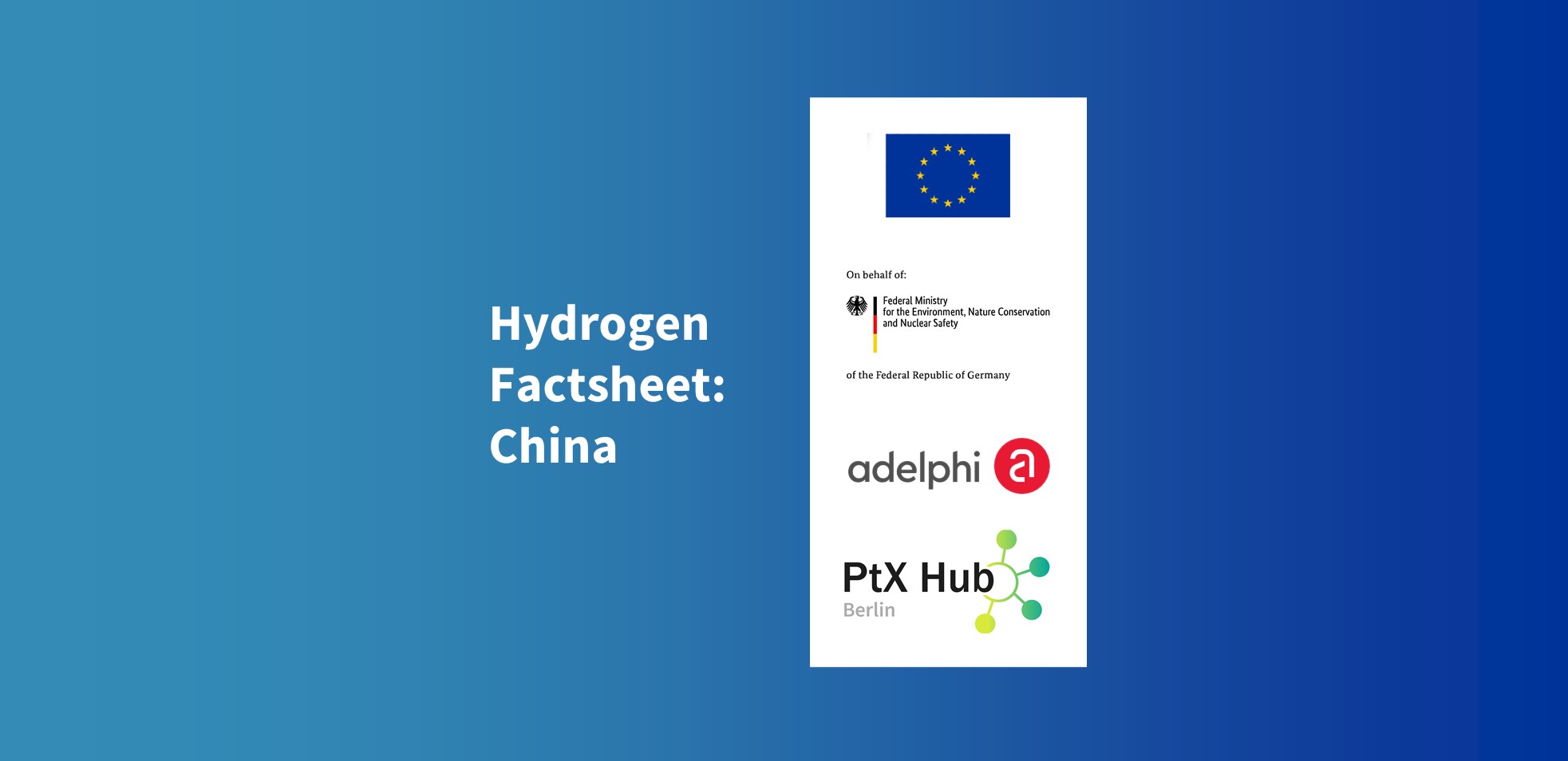The factsheet was produced by adelphi in cooperation with the PtX Hub. Financial support was provided by the European Union’s Partnership Instrument and the German Federal Ministry for the Environment, Nature Conservation, and Nuclear Safety (BMU) in the context of the International Climate Initiative (IKI). The contents of this publication are the sole responsibility of adelphi and do not necessarily reflect the views of the funders.
Hydrogen Factsheet – China
Executive Summary
China is the largest producer and consumer of hydrogen in the world. Since 2010, China has increased its hydrogen production by 6.8% per year to reach 33 million tons in 2020. Today, hydrogen produced by coal gasification makes up more than 60% of the supply, hydrogen produced from SMR represents 20% of the supply, 18% as a by-product of industrial processes, while less than 1% is “green”. In Chinese, hydrogen produced from fossil fuels, including from coal, is referred to as grey hydrogen (“灰氢“).
Hydrogen has been integrated into a number of top-level national energy and technology development strategies, a process which has gathered speed since 2020. In March 2022, China’s top economic planner released a hydrogen development plan for the 2021-2035 period, futher advancing the hydrogen momentum in China. The central government’s R&D program is a key funding scheme for hydrogen technology. The National Key Research and Development Program managed by the Ministry of of Science and Technology has a dedicated funding stream for accelerating renewable energy and hydrogen energy technology. In the future, central government plans to strengthen the financial support including via central budget investment. In addition, many regional governments have set up their own hydrogen strategies with local subsidy provisions. To date, hydrogen in China is mainly used as industrial feedstock to produce ammonia, methanol, and for petroleum refining. Government strategies aim to expand the use of hydrogen to the light and heavy duty transport sector, amongst others, by supporting the uptake of hydrogen fuel cell vehicles, primarily subsidizing the producers. The 2022 Winter Olympics in Beijing were presented as symbolic of China’s hydrogen technology readiness, with up to 1000 buses powered by domestically made hydrogen fuel cells deployed for the event.
Until recently, the shift from grey to green hydrogen has not been at the center of China’s energy agenda. This changed with President Xi Jinping’s announcement on 22 September 2020 that China would peak its emissions by 2030 and reach carbon neutrality by 2060 and develop a 1+N framework to support achieving them. The transition to green and blue hydrogen production has since been high on China’s policy agenda. Several green hydrogen projects are currently being developed, in particular in Inner Mongolia and Xinjiang, supported by major state-owned energy enterprises such as Sinopec. In the newly released 2021-2035 hydrogen plan, China aims to produce 0.1-0.2 MT green hydrogen annually by 2025 and to significantly improve the portion of green hydrogen in its energy consumption by 2025. Blue hydrogen technologies, i.e., fossil-based hydrogen production with CCUS, are still in the early stages of development, but are expected to mature by 2030 and play an important role in China’s path to carbon neutrality.
According to the IEA’s Energy Sector Roadmap to Carbon Neutrality in China published in 2021, hydrogen will play a growing role in China’s energy transition between 2021 and 2060, with a sharp increase after 2030. By 2060, hydrogen demand could increase to 90 Mt. China sees a broad application of hydrogen across different sectors such as the light and heavy transport, industry, power generation and electricity storage.
Given China’s vast domestic energy demand, the constraints to long-distance transport of hydrogen, and the sheer distance between the EU and China, the opportunities for establishing trade connections in hydrogen between the two economies are limited. However, other opportunities for collaboration exist, such as in R&D, standard-setting, trade of low-carbon hydrogen technology and equipment and joint projects in third countries. Such engagements would help accelerate the transition to green hydrogen in both regions and facilitate alignment on sustainability criteria.
Download the Hydrogen Factsheet for China in full length here.
